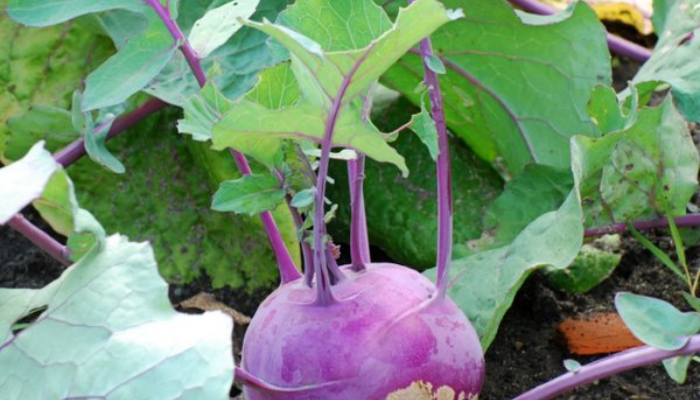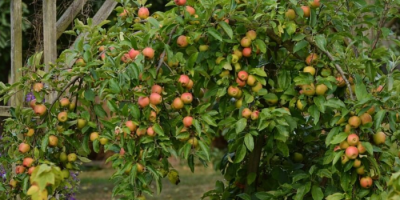Kohlrabi is a vegetable that is gaining in popularity due to its unique flavor and health benefits. It is an excellent source of vitamins A, C, and K, as well as dietary fiber, calcium, and potassium. Its mild flavor makes it a great addition to salads, stir-fries, and more. But to take full advantage of the benefits of kohlrabi, it’s important to pair it with the right companion plants. As it turns out, there are quite a few plants that make excellent partners for kohlrabi, which can help maximize its flavor and nutritional value.
Benefits of Growing Kohlrabi with Companion Plants
Kohlrabi is an excellent vegetable to grow in your garden. Not only is it delicious and packed with nutrients, but it can also be grown in a variety of companion plants for added benefits. Companion planting is the practice of growing two or more plants together in order to maximize their respective growth and yield potential.
When it comes to Kohlrabi, companion planting can provide numerous benefits such as increased disease resistance, improved pollination, and increased soil fertility. Growing Kohlrabi with companion plants can also help to deter pests and weeds while providing additional nutrients to the soil.
Growing a mixture of herbs, vegetables, and flowers alongside Kohlrabi can not only provide a beautiful garden but also enhanced flavors and higher yields. Some of the best companion plants for Kohlrabi include tomatoes, beets, spinach, carrots, celery, parsley, and chives.
Each of these plants has its own unique benefits, such as improved pest resistance, increased soil fertility, and improved pollination. By planting a variety of companion plants alongside Kohlrabi, gardeners can maximize the growth and yield potential of their Kohlrabi crop.
Choosing the Right Companion Plants for Kohlrabi
Choosing the right companion plants for Kohlrabi can make all the difference when it comes to a successful garden. Kohlrabi is a vegetable that is part of the cabbage family and is grown for its edible bulb. It is easy to grow and can be a great addition to any garden.
However, it is important to choose the right companion plants to ensure the best growth and productivity of your Kohlrabi crop. The best companion plants for Kohlrabi are legumes, such as beans and peas, and other vegetables, such as carrots and onions.
Legumes will help to fix nitrogen in the soil, which will benefit the Kohlrabi. Carrots and onions will also provide additional nutrients and help to repel certain pests away from the Kohlrabi.
Another great companion plant for Kohlrabi is basil, which will help to attract pollinators and improve the flavor of the Kohlrabi. While Kohlrabi can be grown without companion plants, having the right companion plants will ensure the best growth, productivity, and flavor.
Good Companion Plants for Kohrlabi
Good Companion Plants for Kohlrabi: Kohlrabi is a vegetable that is relatively easy to grow in the home garden. This cruciferous vegetable is a great addition to any home garden and it can be easily grown alongside other vegetables.
One of the best companion plants for Kohlrabi is tomatoes, as the two crops can benefit from the same growing conditions and the tomatoes can provide some additional shade for the kohlrabi during the hot summer months.
Other good companion plants for Kohlrabi include cabbage, lettuce, and other leafy greens. All of these vegetables help to keep the soil moist and fertile, which helps the Kohlrabi to grow. Additionally, they can also help to deter pests, as some of these plants have strong scents that can repel many garden pests.
Finally, companion planting with Kohlrabi can also help to improve the flavor of the vegetable, as certain herbs and flowers can help to bring out the flavor of the Kohlrabi. Planting chives and garlic near the Kohlrabi can provide a delicious taste, while marigolds can provide a beautiful pop of color in the garden.
Adverse Companion Plants for Kohlrabi
When it comes to companion planting, it is important to consider the adverse effects certain plants can have on Kohlrabi. While many plants can benefit Kohlrabi, some can cause it harm, so it is important to avoid planting them in close proximity to Kohlrabi.
Examples of adverse companion plants for Kohlrabi include pole beans, which can spread disease to Kohlrabi, and potatoes, which can lead to nutrient competition.
In addition, Kohlrabi should not be planted near brassicas, such as cabbage and cauliflower, as they are prone to the same diseases and can cause Kohlrabi to become stunted and weak.
Finally, Kohlrabi should not be planted near onions, garlic, and leeks, as the strong scent of these plants may repel Kohlrabi’s pollinators. By avoiding these plants, gardeners can ensure that their Kohlrabi can thrive and produce healthy, flavorful vegetables.
Strategies to Maximize Kohlrabi Growth with Companion Planting
Companion planting with kohlrabi can be a great way to maximize the growth and yield of this vegetable. One of the most important strategies is to select companion plants that have different root systems than kohlrabi.
Companion plants with deep root systems such as peas, beans, and carrots are great choices for kohlrabi since they will not compete with kohlrabi for the same nutrients and water.
Additionally, companion plants can help to improve soil fertility and provide additional organic matter, which can help to increase yields of kohlrabi. Another important strategy is to choose companion plants that will attract beneficial insects to the garden. Plants such as dill, parsley, and marigolds are great choices for this purpose, as they can help to control pest populations and improve pollination.
Finally, companion plants can also be used to help keep kohlrabi cool in warm weather, by providing shade and creating a more humid microclimate. Herbs such as basil, mint, and oregano are good options for this purpose.
By carefully selecting the right companion plants, gardeners can maximize the growth and yields of kohlrabi, while also creating a more diverse and healthy garden environment.
Conclusion
Companion planting with kohlrabi is a great way to maximize the yields, flavor, and quality of your kohlrabi crop. By planting kohlrabi with other vegetables, herbs, and flowers, it will be able to ward off pests and diseases, take advantage of beneficial insects, and be able to grow in more nutrient-rich soil.
Consider companion planting with kohlrabi if you’re looking to get the most out of your kohlrabi crop. Although there may be some trial and error involved, the rewards of a healthier and more plentiful crop will be worth the effort.


















Comments